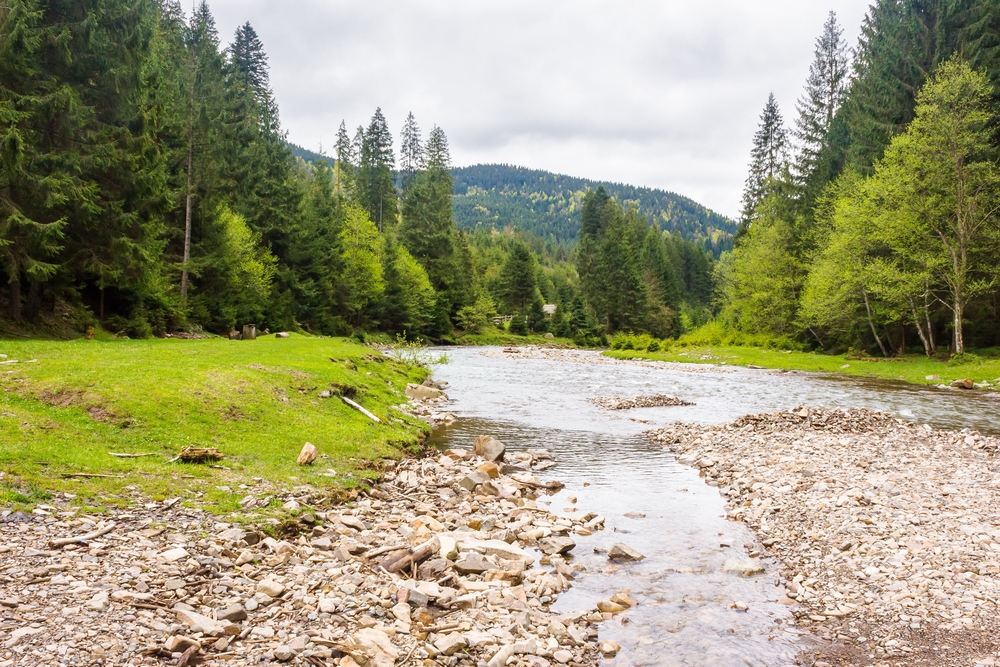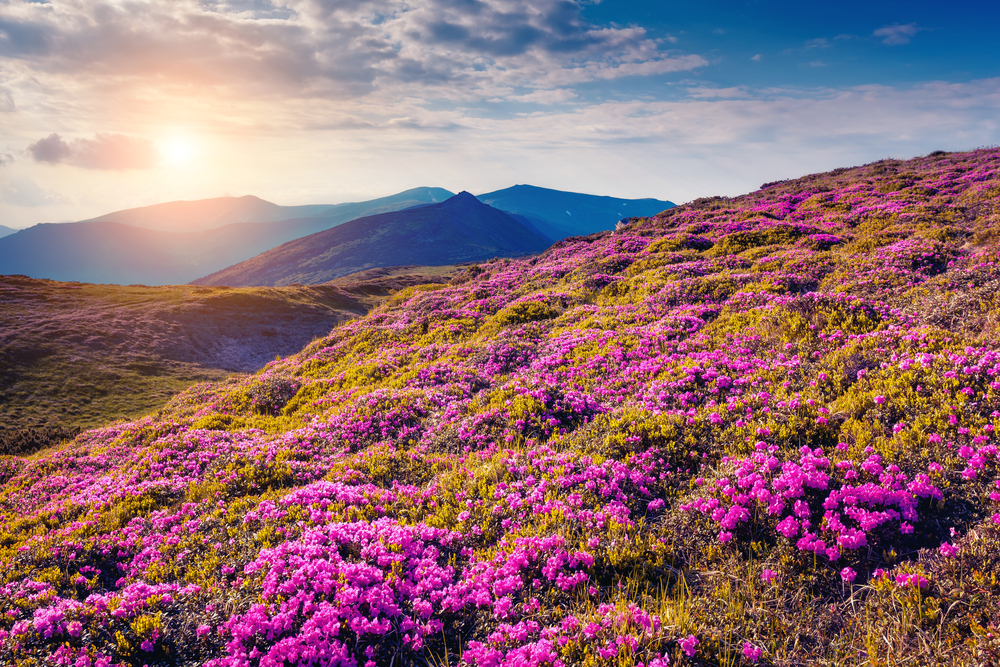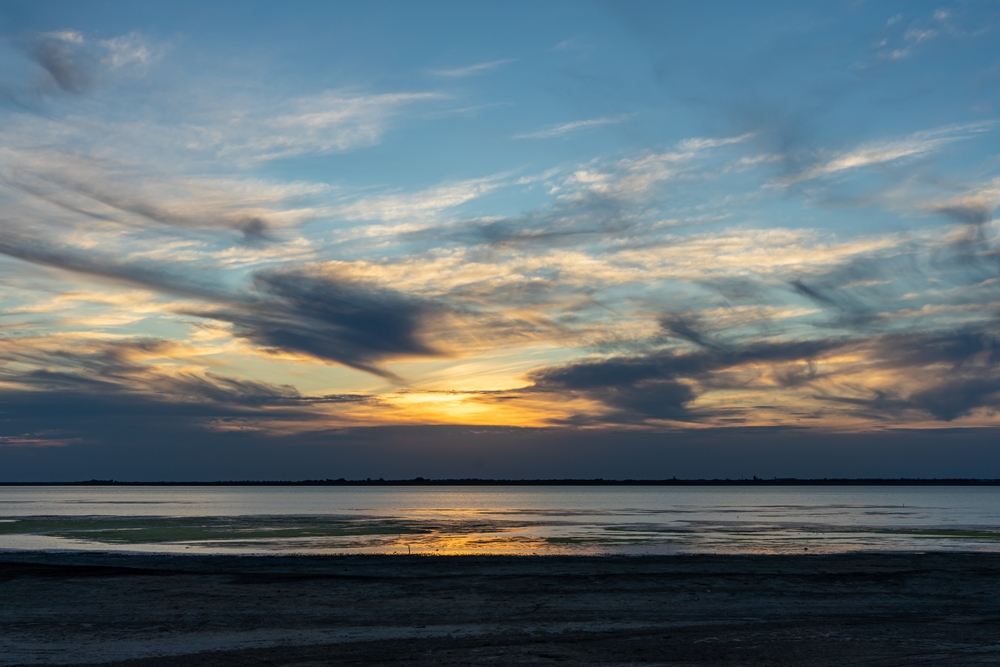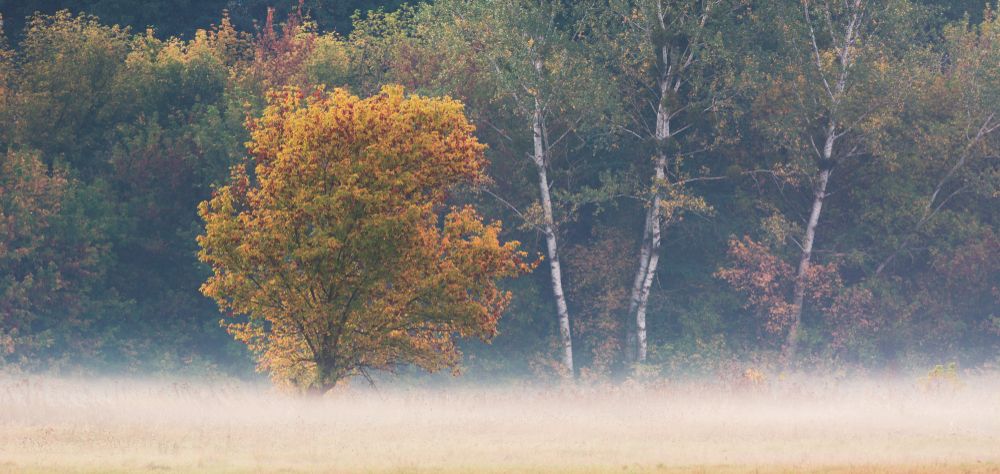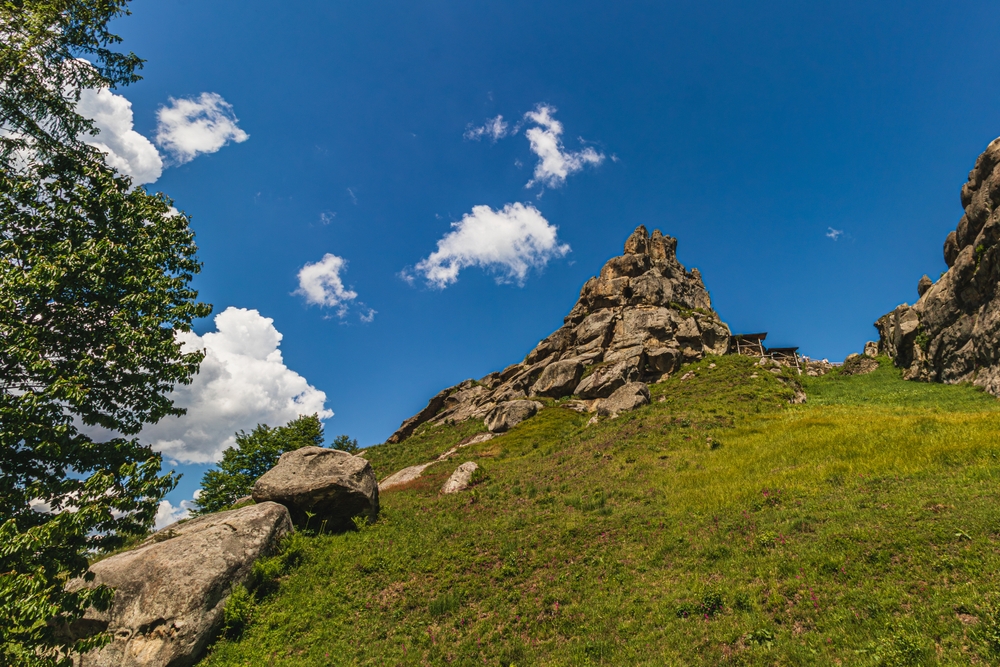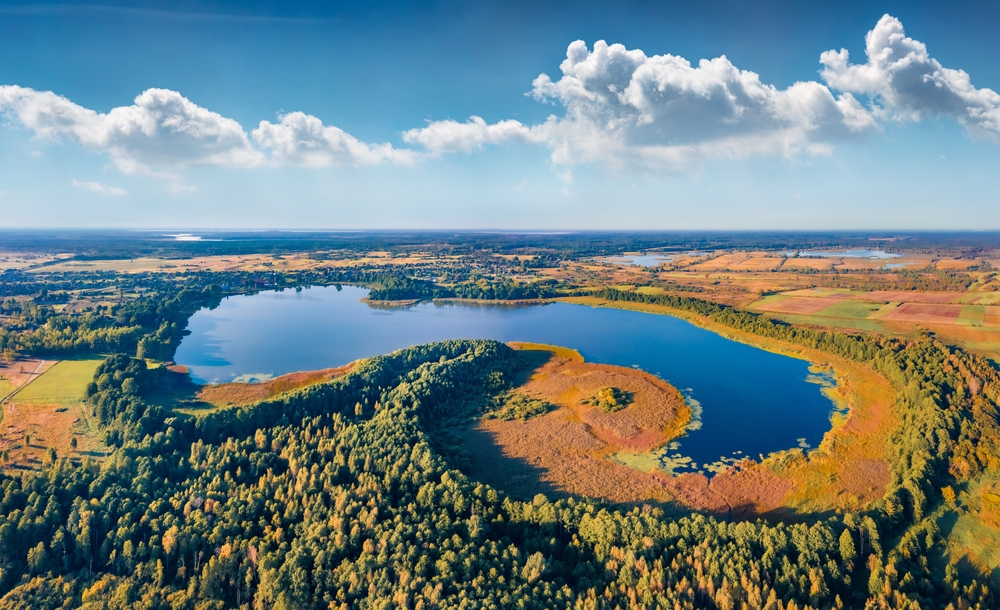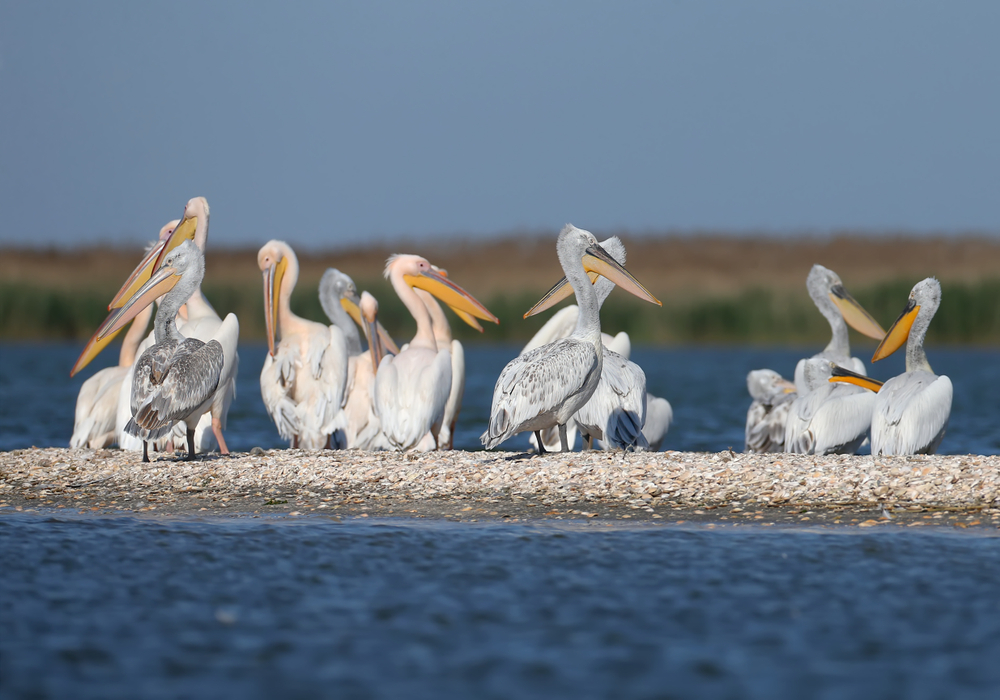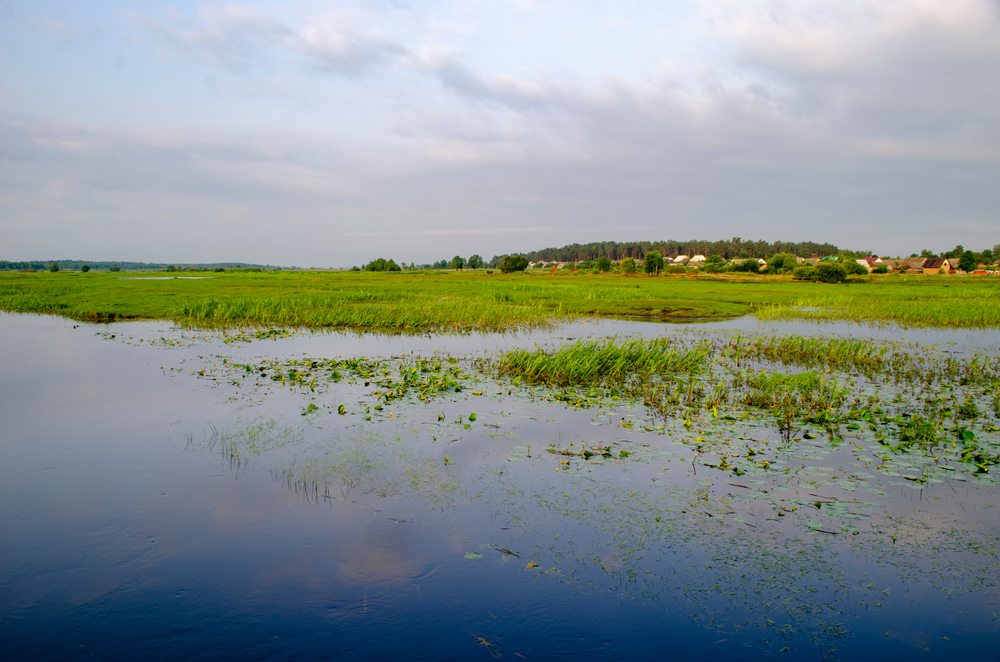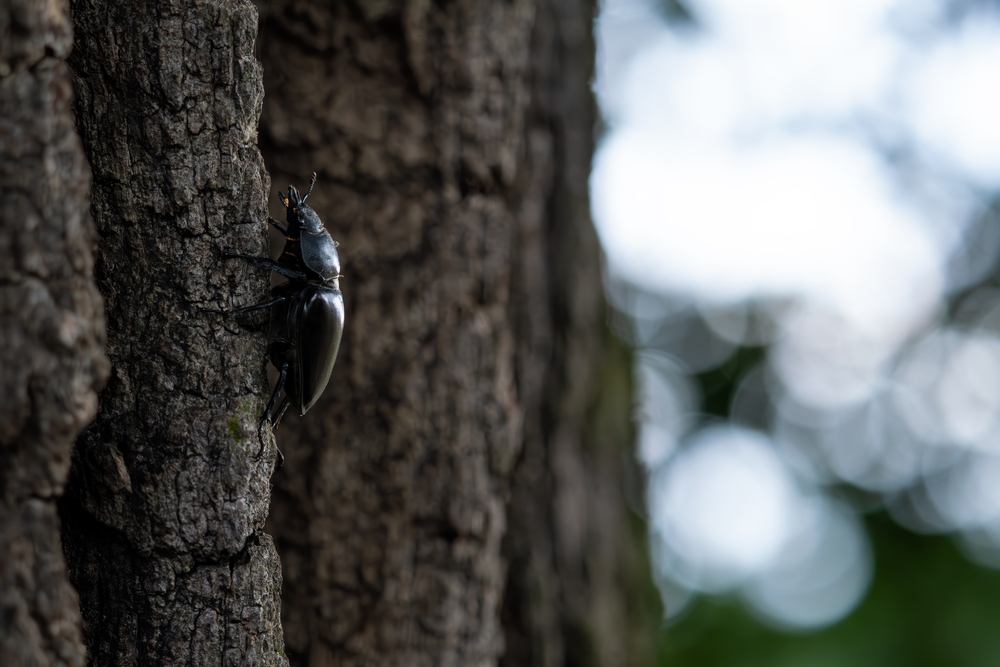Synevyr Overview
Synevyr National Park, known locally as Національний природний парк «Синевир», is a protected area in western Ukraine, spanning approximately 167 square miles (432 square kilometers).
Located in the Carpathian Mountains within Zakarpattia Oblast, the park is renowned for its dramatic landscapes, lush forests, and diverse ecosystems. The centerpiece of the park is Synevyr Lake, often referred to as the “Eye of the Carpathians,” a glacial lake that sits at an altitude of 989 meters (3,245 feet).
Towering peaks, including Mount Ozerna and Mount Strymba, dominate the terrain, along with rolling meadows, deep valleys, and rushing mountain rivers. The park’s dense forests are composed primarily of spruce, fir, and beech trees, forming a rich habitat for a variety of wildlife.
Visitors to Synevyr National Park may encounter an array of wildlife, including large mammals such as brown bears, lynxes, and wolves, which roam the forested slopes. The European red deer and roe deer are also common, along with wild boars that thrive in the dense undergrowth.
Birdwatchers can observe golden eagles soaring above the cliffs, while black storks and Ural owls inhabit the ancient woodlands. The park’s diverse environment also supports amphibians like the fire salamander, which can be spotted near streams and wetlands. This variety of species makes Synevyr National Park a significant area for biodiversity conservation in the Carpathians.
Among the park’s most famous attractions, Synevyr Lake remains the primary draw, surrounded by towering evergreen trees and offering a peaceful retreat into nature. The lake’s legend of two tragic lovers, Syn and Vyr, adds a mystical charm to its already stunning beauty.
The park also features several waterfalls, with the Shypit Waterfall being one of the most picturesque, cascading down rocky cliffs amid thick vegetation. Wooden observation towers and scenic viewpoints allow visitors to take in breathtaking panoramic views of the mountainous landscape.
Additionally, the park is home to the Brown Bear Rehabilitation Center, which provides a sanctuary for rescued bears, offering visitors the chance to learn about conservation efforts firsthand.
Visitors can explore Synevyr National Park through an extensive network of hiking trails, leading through dense forests, across alpine meadows, and up mountain ridges for spectacular vistas. Horseback riding and cycling routes offer alternative ways to experience the park’s landscapes, while guided eco-tours provide insight into the region’s natural and cultural heritage.
Boating on Synevyr Lake is a popular activity, allowing visitors to glide across its tranquil waters while admiring the surrounding peaks. In the winter months, the park transforms into a snowy wonderland, attracting those interested in cross-country skiing and snowshoeing. Traditional wooden houses and eco-lodges scattered throughout the park provide cozy accommodations that blend seamlessly with the environment.
Conservation in Synevyr National Park faces challenges such as illegal logging, habitat fragmentation, and the impact of tourism on fragile ecosystems. However, management efforts have led to successes, including the establishment of protected zones and the rehabilitation of wildlife such as the brown bear.
Sustainable tourism initiatives and environmental education programs aim to balance visitor experiences with conservation goals, ensuring the park remains a pristine natural sanctuary for future generations.








































































